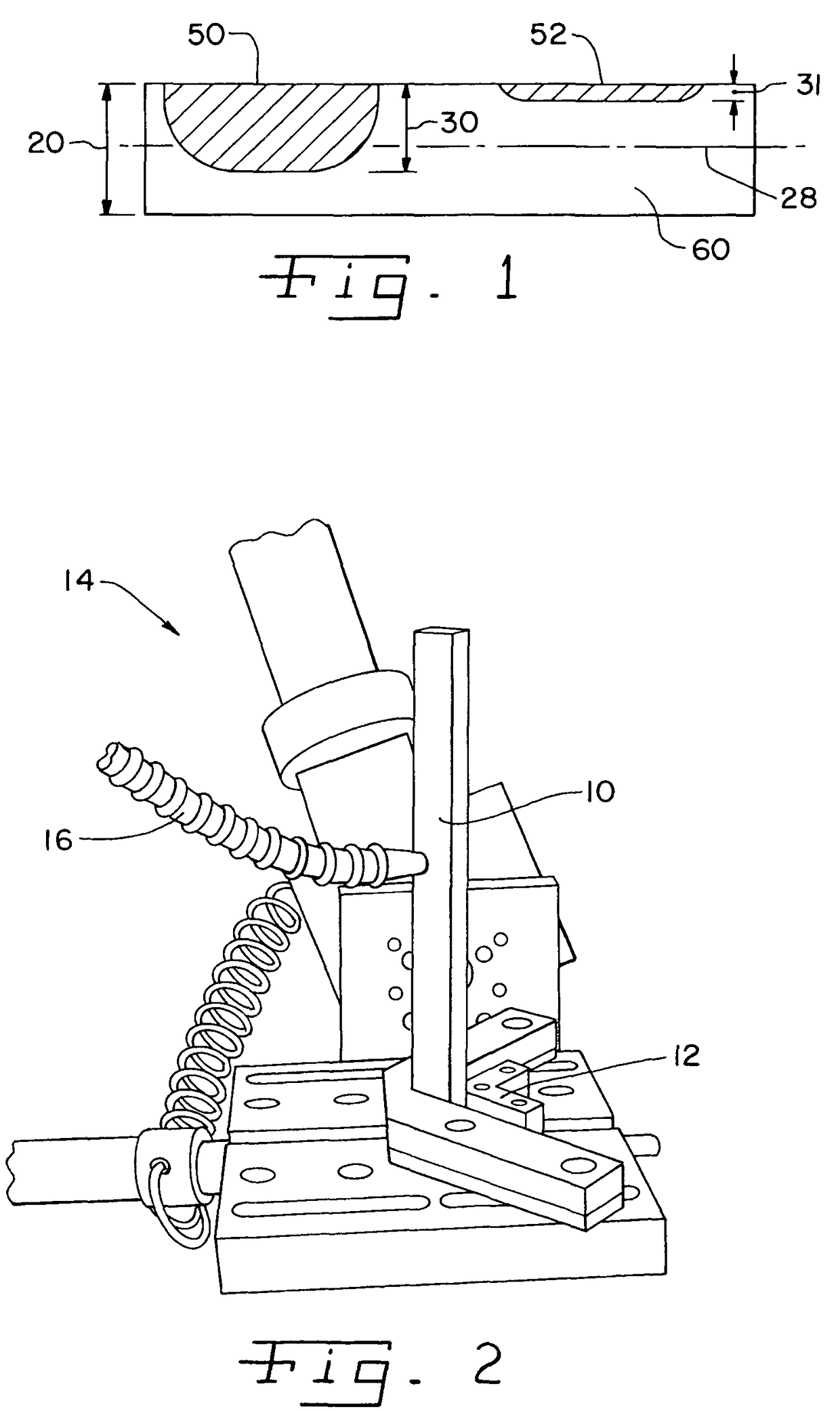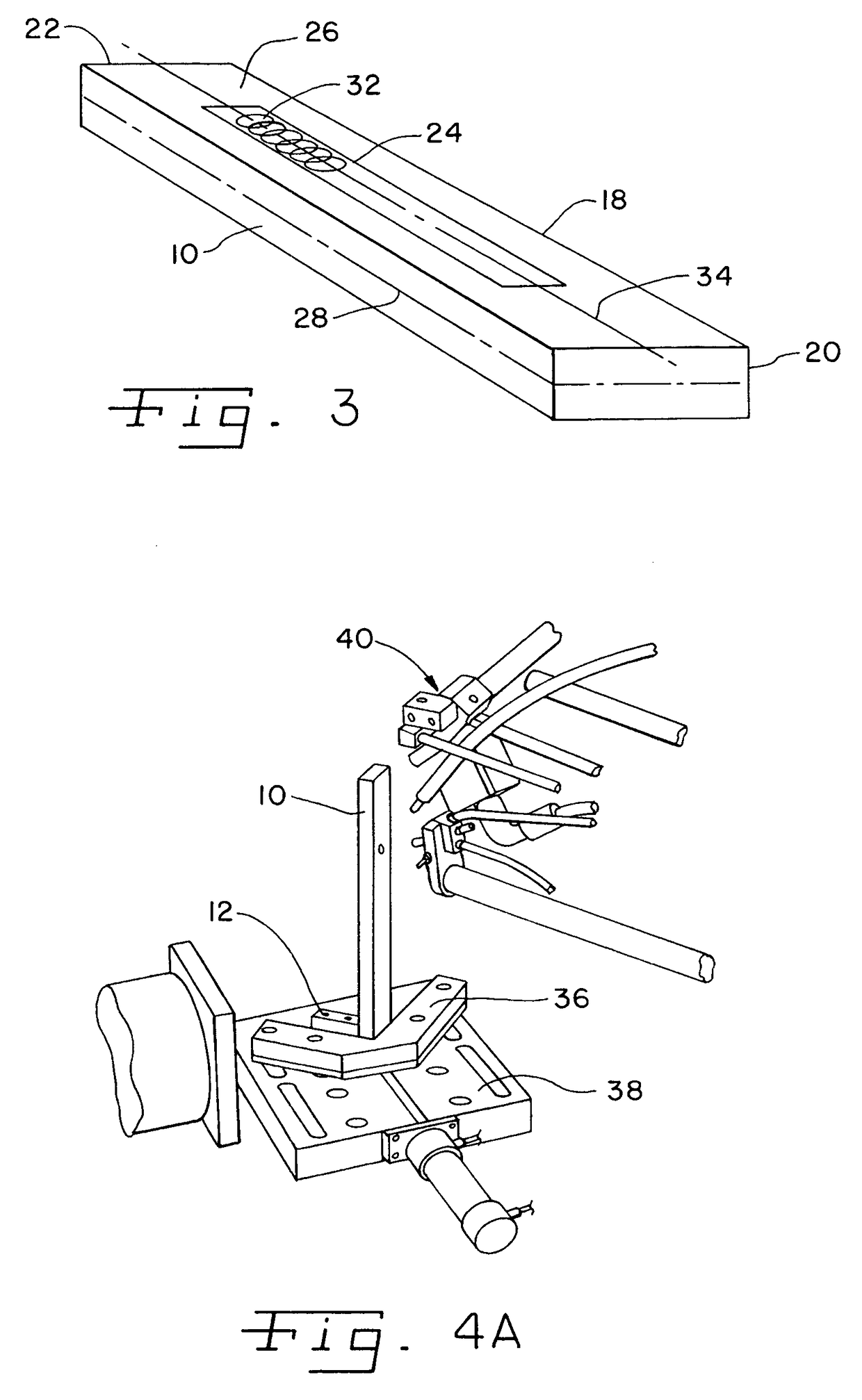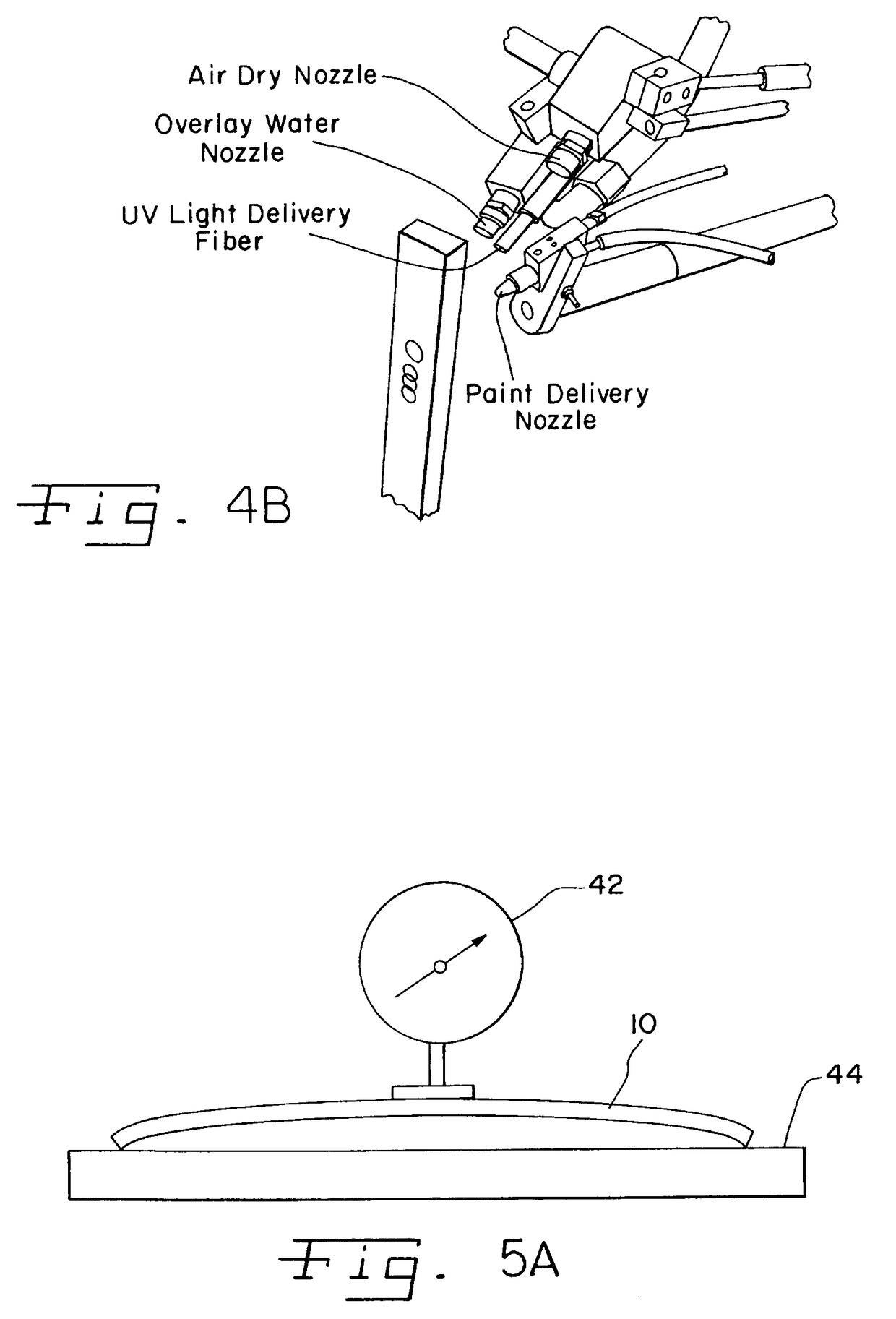Bend bar quality control method for laser shock peening
a quality control method and laser shock technology, applied in the direction of manufacturing tools, material strength using steady bending forces, instruments, etc., can solve the problems of sacrificing samples for testing, affecting the quality of laser shock processing, so as to facilitate the production of readily measurable deformation, reliable and economical quality control tools, and the effect of reducing the number of tests
- Summary
- Abstract
- Description
- Claims
- Application Information
AI Technical Summary
Benefits of technology
Problems solved by technology
Method used
Image
Examples
Embodiment Construction
[0031]Referring now to the drawings, FIG. 1 shows an Almen strip 60 of thickness 20 having a laser peened surface 50 and a shot peened surface 52. The depth of compressive stress 30 under the laser peened surface extends beyond the mid-thickness plane 28 of the Almen strip 60, while the shot peened compressive stress depth 31 is far from the mid-thickness plane. A problem arises at laser peened surface so in that it is necessary that the depth 30 does not extend beyond the mid-thickness plane 28 of the Almen strip 60 to achieve consistent deflection measurements for process monitoring.
[0032]In FIG. 2, there is shown a bend bar 10 of the present invention for use in testing for the consistency of residual stress effects created during laser peening. Bend bar 10 is shown, mounted in a vise fixture 12, for treatment with a laser peening apparatus 14. The illustrated version of laser peening apparatus 14 (FIGS. 4A and 4B) includes a laser mechanism 15, transparent overlay delivery means...
PUM
| Property | Measurement | Unit |
|---|---|---|
| thickness | aaaaa | aaaaa |
| thickness | aaaaa | aaaaa |
| thickness | aaaaa | aaaaa |
Abstract
Description
Claims
Application Information
 Login to View More
Login to View More - R&D
- Intellectual Property
- Life Sciences
- Materials
- Tech Scout
- Unparalleled Data Quality
- Higher Quality Content
- 60% Fewer Hallucinations
Browse by: Latest US Patents, China's latest patents, Technical Efficacy Thesaurus, Application Domain, Technology Topic, Popular Technical Reports.
© 2025 PatSnap. All rights reserved.Legal|Privacy policy|Modern Slavery Act Transparency Statement|Sitemap|About US| Contact US: help@patsnap.com



